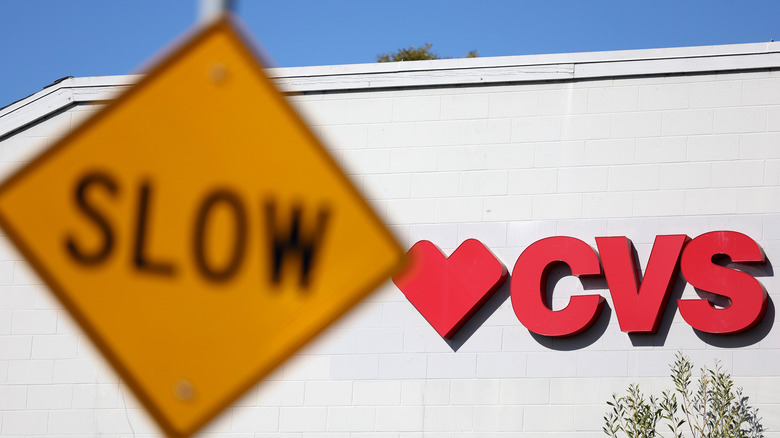One Of America's Most Popular Drugstores Is Closing More Than 250 Stores In 2025
CVS Health is closing more stores — but this isn't a sudden move. The company has actually been scaling back since 2021, when it announced plans to shut down 900 locations over three years. Now, in 2025, 270 more stores will be closed in response to changing trends in retail health. In fact, the retail pharmacy market has been changing fast, especially since the COVID-19 pandemic placed new and different strains on pharmacies. The popularity of online shopping and even mobile prescription refill options are keeping more and more consumers out of physical retail drugstores. This is part of why CVS' decision to close these stores is actually part of a bigger strategy to adapt to how consumers use pharmacies in 2025.
There are also rising costs putting additional pressure on the pharmaceutical industry. According to Vizient's 2025 forecast, pharmacies will see a 3.84% increase in how much they spend — mainly due to the growing costs of specialty medications and an increase in healthcare supply chain expenses. Specialty medications, the drugs used to treat more complex diseases, don't just start off pricey but stay expensive because drug companies get exclusive rights to sell them for longer periods. This limits competition and keeps prices high by eliminating the option for cheaper generic alternatives to be made. This also makes it harder for pharmacies to keep their costs under control. As a result, companies are making tough calls like CVS laying off 2,900 employees and Walgreens shutting down 1,200 locations in 2024.
Shifting to smaller CVS stores
The foundation of CVS' changes are rooted in catering to consumers' needs. This is why CVS is also making its stores smaller, around 5,000 square feet instead of their traditional locations which are two or three times that size. A dozen of these smaller-format stores will arrive in 2025, with a CVS spokesperson telling CNN that these locations "will be designed to meet the community's specific pharmacy needs." In essence, the focus is on what you go to the pharmacy for: getting prescriptions filled, picking up essential health products, and maybe getting some quick clinical advice or services. This means you will no longer find non-essential retail items like seasonal decorations and general merchandise.
By keeping stores smaller, CVS can reduce their costs, allowing them to put more into training staff, improving digital tools, and offering services like same-day prescription delivery. Meanwhile, on the CVS app, you can manage your prescriptions, set up appointments for vaccinations, and even chat with a pharmacist right from your phone. These moves could give CVS a leg up against competitors like Amazon Pharmacy, which is all about speedy delivery right to your door. However, by maintaining these smaller, physical stores, CVS can also serve customers who might not be as digitally savvy, particularly older folks who still like to walk into a store and talk to a pharmacist face to face.
How the pharmacy retail industry is changing
CVS restructuring is a sign that the pharmacy sector is hitting a turning point. This could put pressure on other major players, like Walgreens and Rite Aid, to similarly shift focus. It's worth noting that CVS is investing more in services like MinuteClinics — walk-in medical clinics that offer treatment for minor illnesses, injuries, and skin conditions while providing vaccinations and chronic condition monitoring — and HealthHUBs, which are expanded versions of MinuteClinics that can handle more comprehensive services for things like diabetes, asthma, and high blood pressure. CVS is also branching out into Medicare Advantage plans and home health services, helped by the acquisition of Signify Health and Oak Street Health in 2023.
With changes like Medicare's drug pricing reforms in view, it is no surprise that CVS, and the entire pharmacy sector, is rethinking its role. For instance, starting in 2025, people on Medicare are capped at $2000 in annual out-of-pocket expenses for their prescriptions. This is meant to stop sudden price spikes and keep medications more affordable over time. So, while drug prices will be more regulated, pharmacies could face shrinking profit margins — pushing them to look for new ways to generate revenue. To make matters worse, President Trump's proposed tariffs could significantly impact prescription drug prices in 2025, adding to the financial strain of the retail pharmacy market. It remains to be seen how CVS' new strategy will play out in an increasingly adapt or die market.


